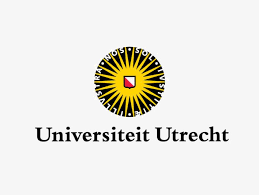
27 Nov Systematic integrative genomics, transcriptomics and ultra-deep proteomics analysis reveals novel insight in disease biology
Experts in proteomics from Utrecht University and next-generation DNA sequencing from the Hubrecht Institute/UMC Utrecht collaborated in a study to systematically determine the consequences of genetic variation on the transcriptome and proteome. The researchers applied ultra-deep quantitative proteomics, whole genome sequencing and RNA-seq to liver tissues from different inbred rat strains. One of these inbred rats, the spontaneously hypertensive rat (SHR), is a widely used disease model for hypertension.
Proteomics experiments are normally hampered by identification methods based on reference genomes. Therefore, the authors designed a personalized protein database for each rat strain examined. They did so by integrating small genomic variants detected by whole genome sequencing and novel splicing and editing variants detected by RNA-seq. This extra information, in combination with the use of 5 different proteases, to extend the proteome coverage, resulted in the largest proteome to date (~13,000 proteins), with over 30% more proteins identified in a single sample than the current standard. Also, hundreds of novel genes, editing sites and transcript isoforms were identified at the protein level for the first time.
Besides this impressive gain in protein identifications subsequent integrated quantitative RNA and protein comparisons provided interesting novel insights in disease biology. Four differentially expressed genes popped up that had previously been associated with hypertension. One of those genes, Cyp17a1, was previously identified as one of the top hits in human hypertension GWAS studies.
 The identified link to hypertension is an illustrative example on how integrative genomics approaches can be used to dissect disease genes and mechanisms.
The identified link to hypertension is an illustrative example on how integrative genomics approaches can be used to dissect disease genes and mechanisms.
‘We have pushed the limits of current genomics and proteomics technologies’ says Prof Edwin Cuppen from the Hubrecht Institute and University Medical Center in Utrecht and one of the corresponding authors on the article. ‘Both in terms of the number of identified proteins as well as their characteristics at the RNA and protein. We demonstrate that the used techniques are now mature and can be used for routine integrative biology approaches to study effects of genetic variation on protein characteristics’
Prof Albert Heck from Utrecht University adds: ‘Our work shows that one plus one is more than two and that additional and relevant molecular details emerge when state-of-the-art technologies are combined. We predict our work to be a milestone, highlighting how next generation proteomics will be executed and can deliver new insights into disease biology.’
Link to the article on Cell Reports: http://www.cell.com/cell-reports/fulltext/S2211-1247(13)00640-2
![]()


Sorry, the comment form is closed at this time.